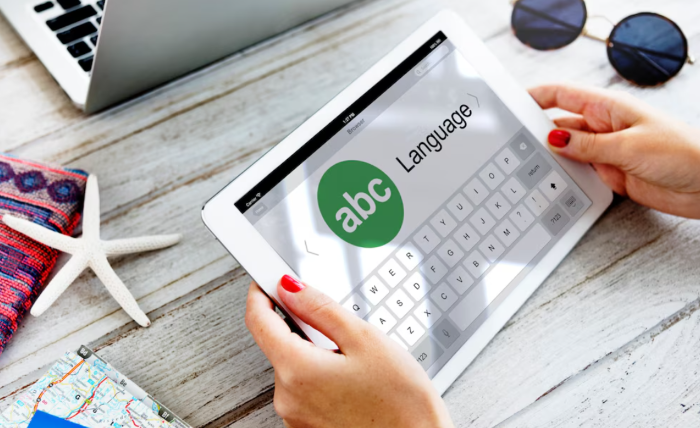The ability to speak multiple languages has become a necessary skill in today’s interconnected world. Many countries, especially the US, have become a melting pot of various cultures and nationalities, with millions of Spanish-speaking residents.
Language learning apps have made learning a new language much easier and more convenient. These apps offer an innovative and flexible way of immersing yourself in a new language.
In 2025, AI-powered technology has further enhanced the landscape of language learning. Apart from AI, language learning applications offer other revolutionary methods, such as gamification and personalized lesson plans, creating an interactive and well-tailored learning experience.
This guide explores the best language learning apps that you can use to enhance your language vault. From light conversational skills to native fluency, you will find options that cater to all your goals.
Tid Bit:
Having a reliable internet connection is crucial to make the most of language learning tools; it helps you access lessons, interact with tutors, or use AI-driven features. Providers like Xfinity offer country-wide WiFi hotspots, ensuring you stay connected on the go and can learn anywhere, anytime.
Also, it stands out by offering services like Xfinity Internet en Espanol and making sure that Spanish-speaking customers get assistance in their native language 24/7.
Now, let’s discover which app best suits your multilingual dreams.
Comencemos!
Top Language Learning Apps
Babbel
Babbel was voted “Overall Best” language learning app by Wired in 2023.
The best feature of Babbel is its focus on structured lesson plans and conversational skills. The lessons start with basic grammar and vocabulary before they move on to teaching real-life conversational skills.
These lessons have been designed by over 150 language experts. Moreover, learners get several options, including games, fill-in-the-blanks type quizzes, podcasts, and even live lessons with language instructors. You can also choose which topic or culture you want to take a lesson on they work in no particular order.
In 2023, Babbel began utilizing 2 AI-powered methods.
- AI-enhanced Speech Recognitionlistens to the learner and gives active feedback on pronunciation.
- Everyday Conversationshelps practice real-life scenarios with conversations.
Unfortunately, Babbel’s free trial is limited. It comes with several subscription options, including $15 per month, $67 for 6 months, $89 annually, or $349 for a lifetime subscription.
Duolingo
Duolingo is perhaps the most well-known language-learning app with over 500 million users in 94 countries. It is most popular for its gamification style that uses short and sweet lessons.
It offers a playful interface that makes language learning feel like a game. The lessons are broken into fun and playful modules that are categorized by skill level and topics. Learners have to maintain a daily streak that motivates them to open the app.
Duolingo also offers AI-powered learning techniques with the assistant BirdBrain. BirdBrain’s algorithm tracks learners’ progress and adjusts lessons accordingly. They also allow learners to practice through “Roleplay” conversations.
The free tier of Duolingo offers a lot. For more features, learners can buy Super Duolingo for $13 per month.
Rosetta Stone
Rosetta Stone was voted the “Overall Best” language learning app by CNN in 2024.
This app is best for beginners who want to get comfortable with a new language. It offers lessons in 25 languages, including English. The courses come in the form of 30-minute lessons.
These lessons have a great progression from basic words and phrases to conversational scenarios, such as what to say at an airport, school, or cafe. Images are also attached for each word and sentence for visual learners. The free tier of Rosetta Stones is offered as a 30-day trial.
Drops
Drops is purely a vocabulary-building app for visual learners. Once you have picked one of the 39 languages offered by the app, the lessons consist of joining images to the words they are associated with.
Drops does not offer any help with grammar, pronunciation, or speaking. Its focus is on building vocabulary by helping learners identify images. So, we recommend pairing it with other language-learning apps.
Drops allows you to pick the topic you want to take a lesson on. The lessons are also timed; the duration being chosen by the learner. The app comes with a 7-day free trial. The paid version offers different subscription packages including $13 per month, $70 annually, or a $160 lifetime membership.
Lingoda
Learning from apps is not a suitable method for everyone. This is where Lingoda comes in.
Lingoda combines traditional online tutoring with the app format. Those who wish to learn a language can sign up for Lingoda and receive online classes via Zoom. These classes can be one-on-one or with a group.
The lessons are provided by qualified learners who decide the course material ahead of time. The difficulty level as well as advancement from one level to the next is also determined by the class instructor. The average length of a lesson is around 60 minutes.
Furthermore, Lingoda is one of the few apps that caters to beginners, intermediate, and advanced learners alike. The prices vary depending on the number of classes and whether you want one-on-one or group lessons.
Key Points
This guide provides a list of the best language-learning apps in the market. The options on this list cater to your budgetary needs as well as different learning styles offered by the apps. The list also includes options that utilize AI-powered technology to create an innovative learning experience. Embark on your language learning journey with this comprehensive guide.

